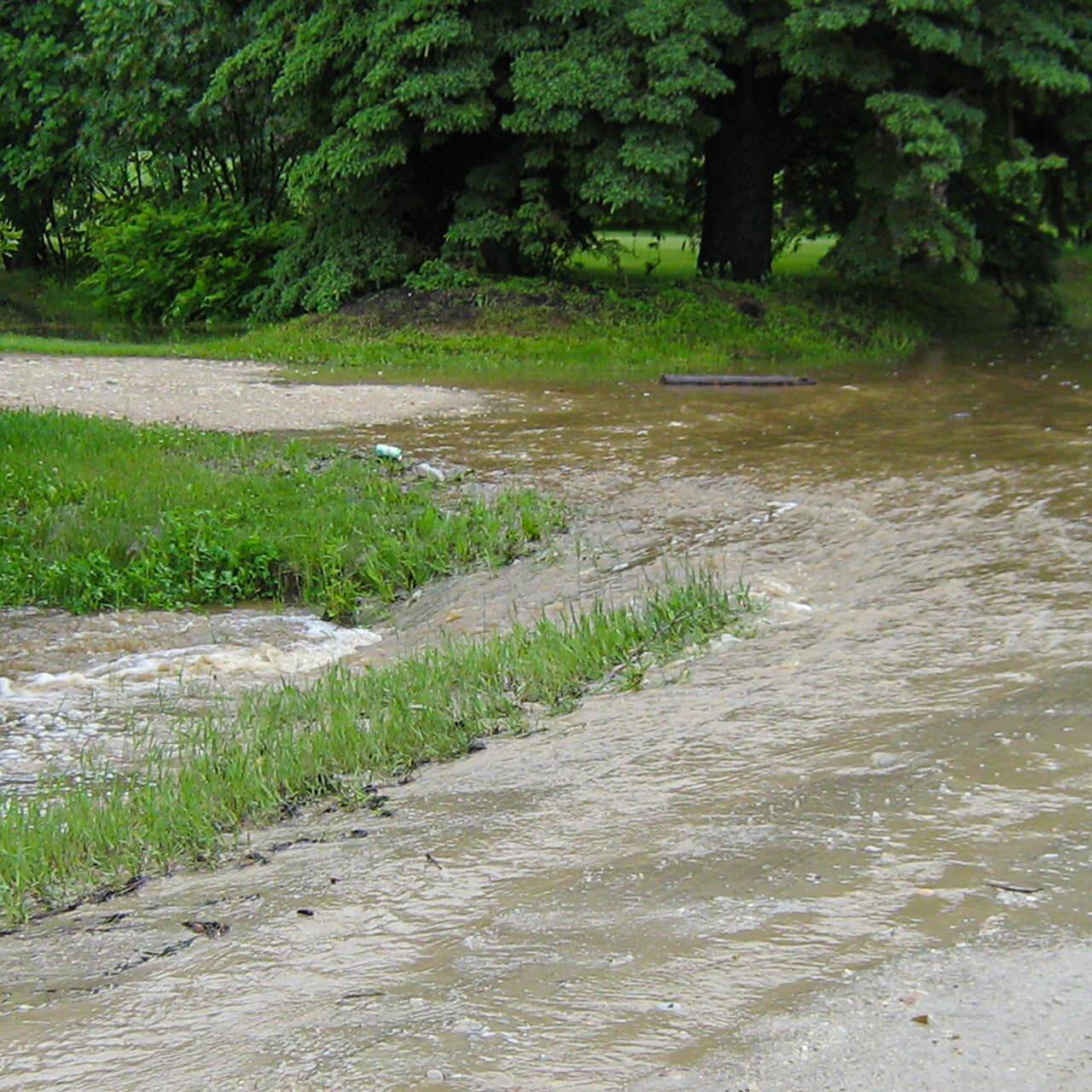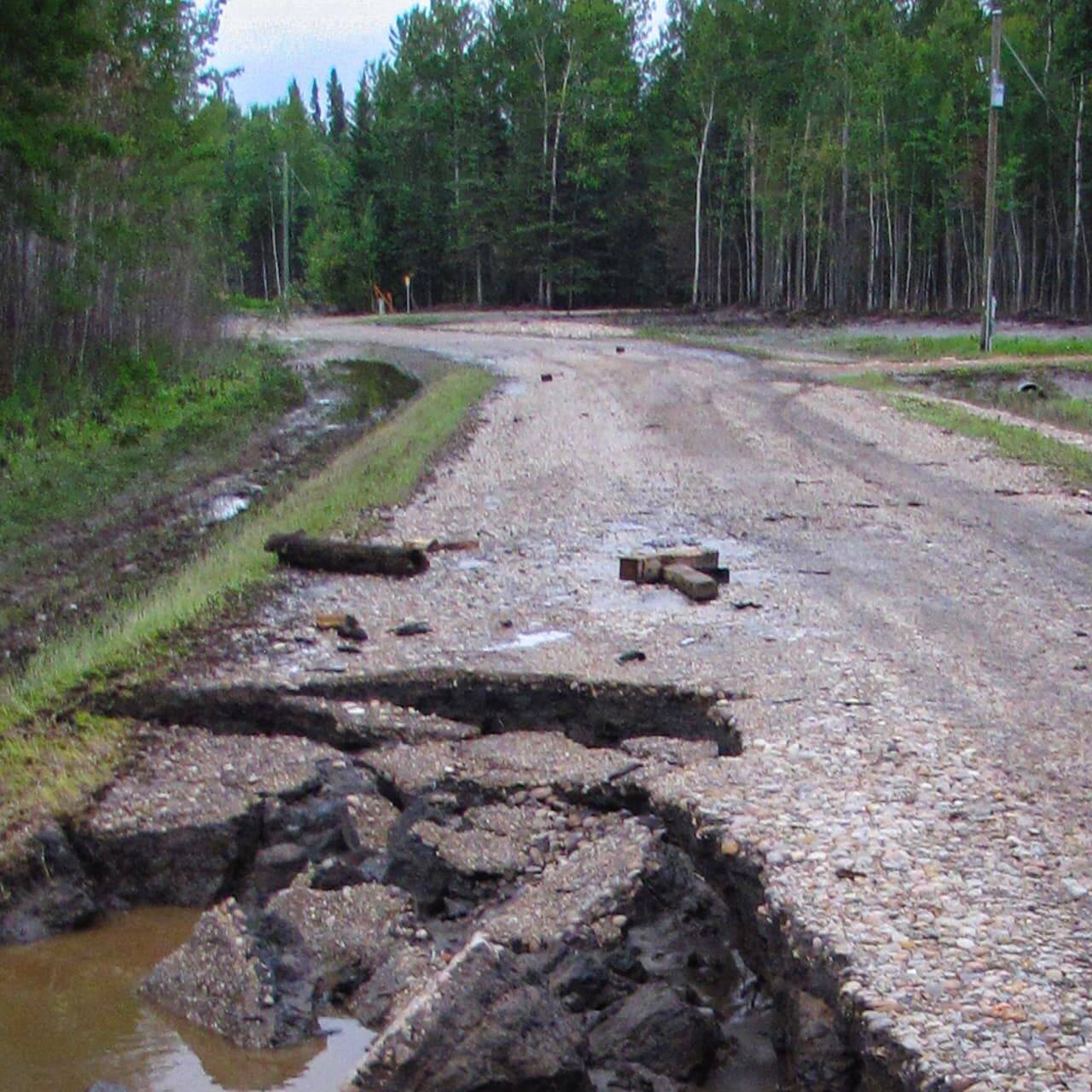what we need
Council is lobbying for federal and provincial contributions to help fund the chosen flood mitigation solution.
Clarity on funding sources and formulas
This project is hindered by the opacity of applicable provincial grant partnership programs.
A proportionate contribution from the Province
Council requests that the Province bear its fair share of financial responsibility for the chosen flood mitigation approach.
Prioritized funding from all levels of government
Council requests special consideration for additional grant funding to help offset the cost of this critical infrastructure project.
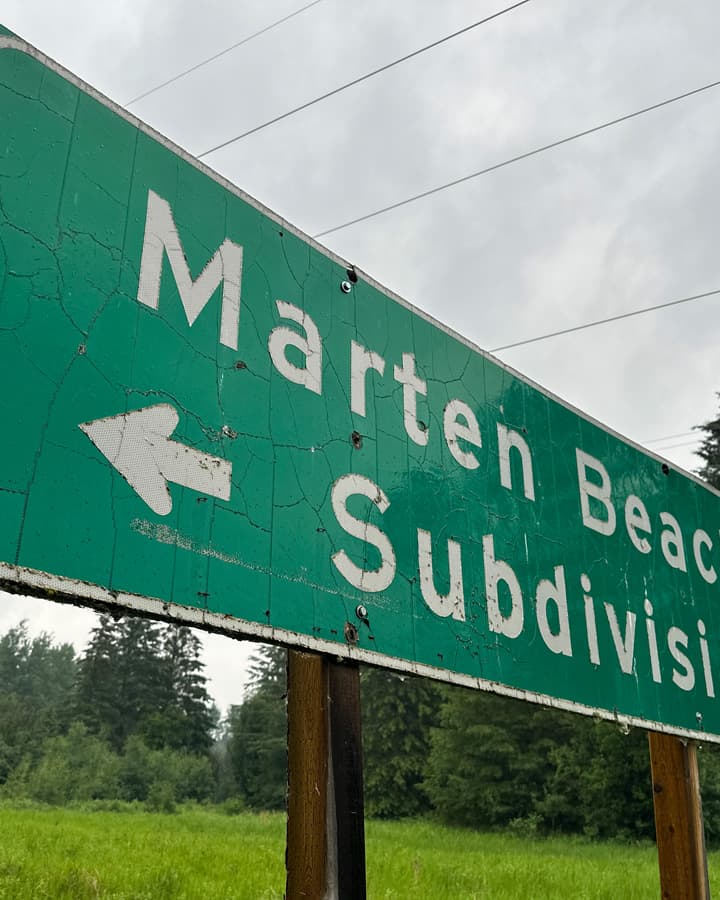
Bankrolling 100% of the Marten Beach flood mitigation solution would negatively impact our fiscal resiliency, and would result in the MD carrying the largest debt load of all counties and municipal districts in Alberta.
The cost to mitigate the ongoing flood threat in Marten Beach is estimated at $10.6 million. Neither the MD nor area homeowners have sufficient means to fund the entire project. Further, there are presently no applicable federal or provincial grant programs. Council requests that the Province pay its fair share of the Marten Beach flood mitigation strategy.
It is not a matter of whether Marten Beach will flood again; it is a matter of when. It only makes sense to take proactive measures to mitigate the risk rather than perpetually pay to clean up the mess each time flooding occurs
The MD remains committed to reducing the flood disaster risk in the Hamlet of Marten Beach. We have a solution in hand called Room for the River, but all levels of government must work together to make it happen.
The Hamlet of Marten Beach has faced more frequent overland flooding in recent years, causing damage, displacing residents, and deterring recreation in this scenic community by Lesser Slave Lake. These incidents are costly and traumatic for residents, and pose an ongoing risk to the MD and Province.
After careful analysis, engineering studies and public input, the MD has chosen a flood mitigation solution that offers the best long-term value for both the MD and Province. In today’s dollars, the cost to implement this solution is $14,113,000 (with an eligible cost of $13,113,000). Funding 100 percent of this project would negatively impact our fiscal resiliency, resulting in the MD carrying the largest debt load of any county or municipality in Alberta.
Rather, Council envisions a shared funding structure between the MD (20%) and provincial & federal levels of government (40% each). However, we are unclear on provincial funding (especially given the shift from MSI to LGFF, making it hard to forecast). As such, this project may rely heavily on MD funding, possibly with some GOA grant support. The MD has applied for federal DMAF grant funding in June 2023, which, if approved, would cover 40% of project costs. This would leave a balance of $7.2 million to be covered by other means.
Provincial portion
The Province’s repeal of the Well Drilling Equipment Tax (WDET) in 2020 eliminated a major advantage for oil-producing municipalities such as ours. One way for the Province to contribute to this project would be to repay tax revenues lost due to the repeal of this tax regulation. Assuming the WDET is assessed at the last regulated rate, the 486 wells drilled within our borders since its repeal would have resulted in more than $3.4 million in tax revenues for the MD.
Given that the spirit of the WDET was to provide rural municipalities with revenue to offset infrastructure costs, Council suggests that the Province consider a repayment of these lost tax revenues to cover its share of the Marten Beach flood abatement project.
COUNCIL OBJECTIVES
Additional grant funding to help pay for the Marten Beach flood mitigation solution.
Province considers repayment of lost WDET tax revenues to offset capital costs to execute the flood mitigation solution.
Status of an allocation formula for the Local Government Fiscal Framework.
THE ASK
Clear grant sources & formulas; this project is hindered by confusion regarding applicable GOA grant partnership programs.
Proportionate contribution; the The Province must bear partial responsibility for flood mitigation.
Proposed tri-government cost sharing; 40% federal, 40% provincial and 20% municipal.
Potential for WDET clawback; resourceful funding mechanisms could help offset project costs.
SUPPORTING DATA
The Hamlet of Marten Beach has experienced increasing occurrences of overland flooding in recent years. These events have damaged homes, temporarily displaced residents, and discouraged recreational use of this picturesque community on the northern shore of Lesser Slave Lake. Proactive measures must be taken to mitigate further risk to this community.
Following extensive engineering, financial and environmental studies and requisite public consultation, a preferred flood mitigation option has been chosen (Option 5: Room for the River with Dykes) at an estimated capital cost of $12 million. This option returns the highest positive long-term net present value for both the Province and the MD. In October of 2022, Nichols Applied Management (Nichols) conducted an analysis that explored capital funding options including the feasibility of the MD financing the project in its entirety.
Council continues to advocate for a funding arrangement where project costs are shared between the MD, affected residents, and provincial grant contributions. However, most residents of this small community would be hard-pressed to take on such a financial burden. As such, the MD would likely shoulder some or all of the resident portion (to be recouped later). This leaves provincial funding as the remaining unknown variable.
Historically, MD financing of large capital items has been largely ad-hoc, consisting of special one-time transfers or small transfers of earned interest income. As such, a large portion of capital spending has typically been supported by the Municipal Sustainability Initiative (MSI) or other grant funding. However, due to the pending shift from the MSI program to the Local Government Fiscal Framework (LGFF) with no apparent formula to forecast the amount received, we face significant funding uncertainty for this venture.
The Marten Beach flood mitigation project will likely be MD-funded in large part; augmented by any provincial grant funding received. We intend to apply for a Disaster Mitigation and Adaptation Fund (DMAF) grant with its potential to cover 40% of the total capital project cost, leaving the MD with a $7.2 million expenditure. If our grant application is unsuccessful, we will likely need to finance 100% of the anticipated $12 million expenditure.
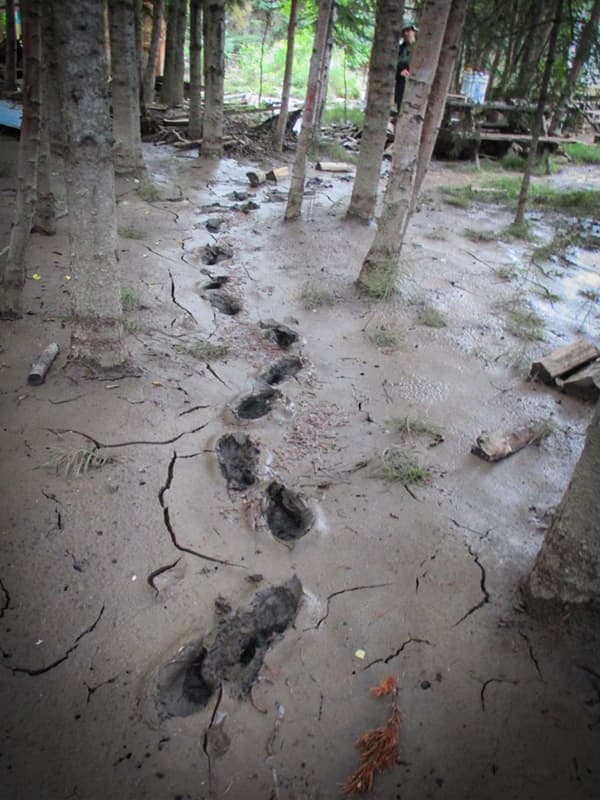
PRIMARY CONCERNS
Council requests special consideration for additional grant funding to help pay for the Marten Beach flood mitigation project.
Council requests that the Province bear its fair share of partial financial responsibility for the chosen flood mitigation strategy in Marten Beach.
This project is hindered by the opacity of applicable provincial grant partnership programs. Council requests the status of an allocation formula for LGFF.
SUPPORTING DATA
The cost to mitigate the ongoing flood threat in Marten Beach is estimated at $10.6 million. Neither the MD nor area homeowners have sufficient means to fund the entire project. Further, there are presently no applicable federal or provincial grant programs. Council requests that the Province pay its fair share of the Marten Beach flood mitigation strategy. It is not a matter of whether Marten Beach will flood again; it is a matter of when. It only makes sense to take proactive measures to mitigate the risk rather than perpetually pay to clean up the mess each time flooding occurs.
Over the last three decades, Marten Beach has experienced two separate “hundred-year” rainfall events (in addition to three “twenty-year” rainfalls). These events have proven costly and traumatic to Marten Beach residents, and pose an ongoing risk to the municipality and Province.
Council, with the assistance of a specialized team of engineering, financial, environmental, and social analyst experts, has undertaken an extensive study on the Marten Beach area regarding flood risk mitigation strategies. This study resulted in five potential flood mitigation strategies. Upon review of the options presented, combined with consideration of community input and legacy studies, MD Council directed administration to evaluate Option 5C: narrowing the entire channel. A detailed cost-benefit analysis isolated Option 5C as returning the highest long-term net present value for both the Province and the MD.
In addition to evaluation of this risk management strategy, the MD has placed a moratorium on development in the area until Alberta Environment and Parks has provided the required flood mapping forecast criteria.
Numerous options were considered prior to arriving at the present flood mitigation strategy, including buying out property owners; moving or raising houses; and installing berms and sheet piles.
All legacy studies conducted by both the Province and the MD were reviewed. In consideration of the recent studies and legacy data, the MD has developed a four-pronged approach to finally address the repeated flooding in a meaningful way. The four components are as follows:
Communication and Engagement
- Current website communication sub-site for updated progress status
- Provision of pertinent information regarding resident preparedness and response
- Provision of pertinent information regarding on site future development, upgrades, and maintenance guidelines
- Ongoing status of engineering flood mitigation design and implementation concept design
Emergency Preparedness Plan
- Establishing the responsibility of the resident
- Establishing the responsibility of the MD
- Establishing the responsibility of the Province
- Determining critical points of implementation
Land Use Bylaw Guidelines and Amendments
- Drafting of Municipal Development Plan and Land Use Bylaw document amendments as necessary to allow for safe future development practices within the various flooding zones
- Creation of a flowchart for intuitive use and informational uptake by residents
Engineered Flood Mitigation Design and Implementation Concept Plan
- Production of a preferred area flood mitigation concept plan for Council and resident endorsement
- Strategies for funding the flood mitigation concept plan
Strategies for political engagement to obtain funding from available grant sources - Development of an implementation timetable
The Marten Beach area has been prone to flooding for many years, wherein a reactionary approach has historically been applied by way of critical incident response and post-flood recovery activities. A proactive approach, while comparatively expensive, will prove far less expensive in the long run.
The Marten Beach subdivision was approved when the MD of Lesser Slave River was still an improvement district; therefore it falls under provincial jurisdiction. It is not reasonable to expect the MD to shoulder the entire cost to fix an inherited problem.

PRIMARY CONCERNS
Council requests special consideration for additional grant funding to help pay for the Marten Beach flood mitigation project.
Council requests that the Province bear its fair share of partial financial responsibility for the chosen flood mitigation strategy in Marten Beach.
This project is hindered by the opacity of applicable provincial grant partnership programs. Council requests the status of an allocation formula for LGFF.
SUPPORTING DATA
The best option:Room for the River
WIDENING THE FLOODPLAIN WILL MITIGATE RISK, BUT SOME HOMES WILL NEED TO BE RELOCATED
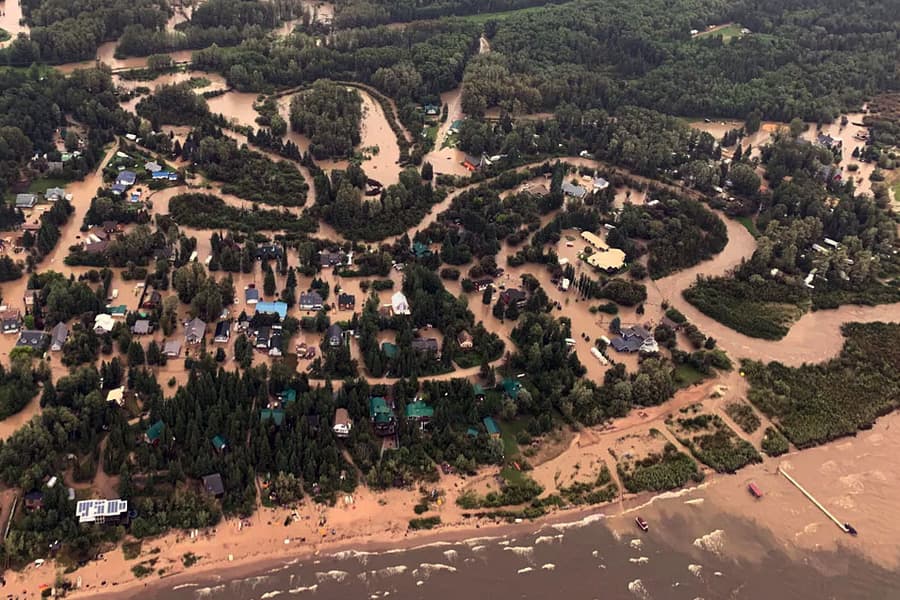
sensible spending
We need to take a proactive approach to flood mitigation.
Marten Beach has been prone to recurrung flooding events for years. We need to stop the cycle of reactionary responses to community recovery after the damage has been done.
Our proactive solution has an up-front cost, but will prove far less expensive in the long run.
resource revenues
Repaying lost tax revenues would offset project costs.
The Province’s 2020 repeal of the Well Drilling Equipment Tax Rate Regulation (WDET) and consequent elimination of a major tax advantage for oil-producing municipalities such as Lesser Slave River.
Assuming the WDET is assessed at the last regulated rate, the 486 wells drilled within our borders since its repeal would have resulted in more than $3.4 million in tax revenues for the MD.
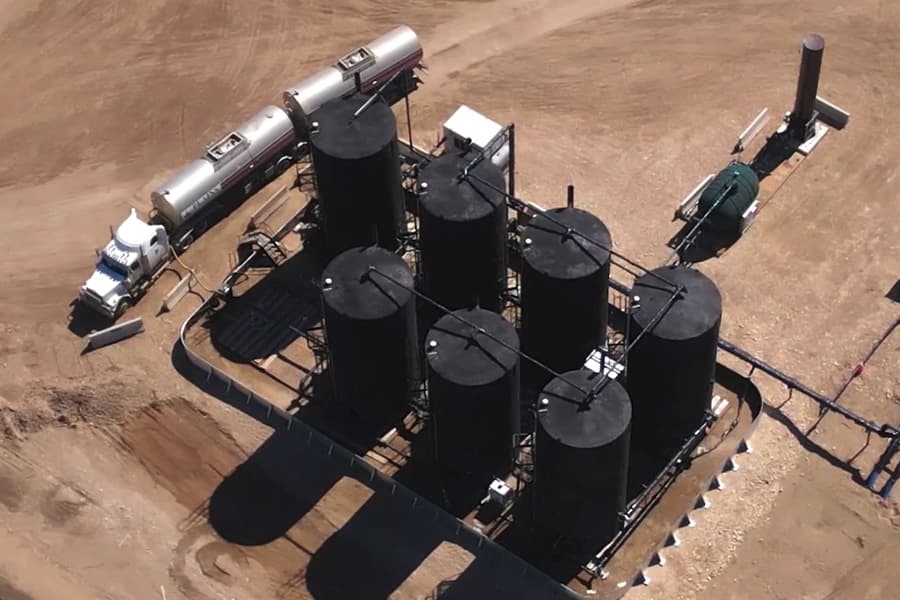
135
Homes located in the Marten Beach community
As the frequency of flooding events climbs, homeowners in this community are left with diminishing options.
2MM
Cleanup costs per Marten Beach flooding event
Each time this community floods, the MD spends more than two million dollars for remediation. This is throwing good money after bad.
220
Area campsites affected by recurring flooding
In addition to permanent residents, flooding takes a considerable toll on the tourism potential of this picturesque region.
SOCIAL IMPACT
Some of the lives affected by the recurring upheaval of flooding.
““It seems like every time we have a flood now it comes quicker; it comes harder; it comes higher. We've repeatedly applied for funding for flood mitigation studies through the government, and have repeatedly been turned down. ”
MD of Lesser Slave River Reeve Murray Kerik

